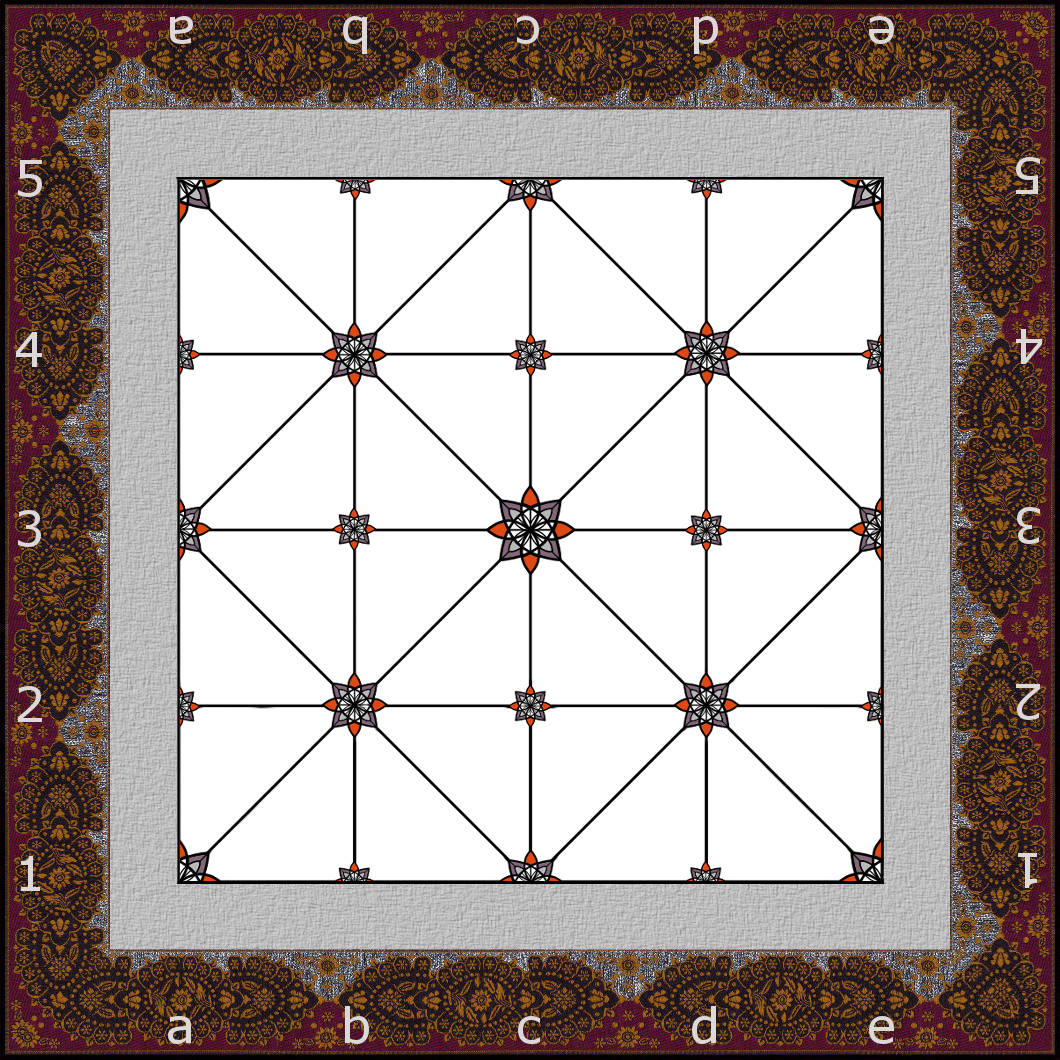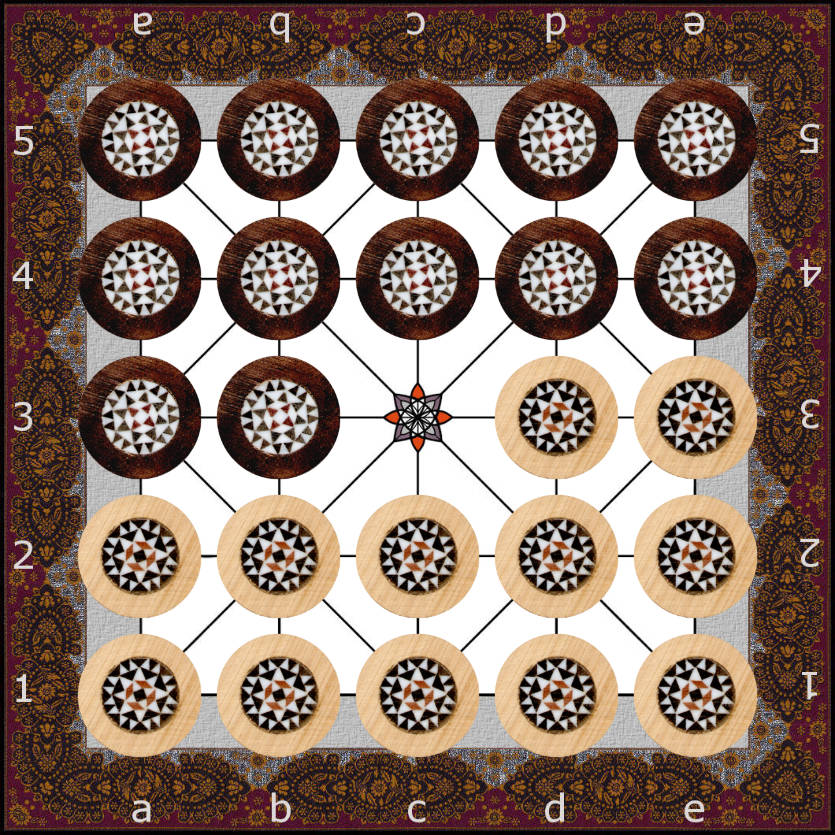Rules
There are different rules available for Alquerque de doze. The default rules as implemented here are as follows. Mind that some parts of the rules might be altered through selected options.
Game Material

Alquerque is a board game. The rectangular Alquerque board has fixed dimension of 5 times 5 positions horizontally and vertically. Positions on board are connected by a fixed line pattern showing potential paths of movement for players’ checkers. The checkers are placed on the positions (or _points_) of line intersections in the line pattern. There are two opposing players: one is controlling the light checkers and the other is controlling the dark checkers.
Starting Position

The twelve light checkers are placed on all positions of rows 1 and 2, and positions d3 and e3 initially. Thus the row 1 is referred to as being the base row of the player controlling the light checkers. The twelve dark checkers are placed on all positions of rows 4 and 5, and positions a3 and b3 initially. Thus the row 5 is referred to as being the base row of the player controlling the dark checkers.
Game Mechanics
Alquerque is played alternating players’ turns. The player controlling light checkers moves first. A player either
- must capture opponent’s pieces if possible or
- must perform a normal non-capturing move otherwise.
Passing a turn is not allowed.
Non-capturing Move
Movement of checkers is performed strictly along the lines of the board onto adjacent free positions.
A light checker can not move from it's position to positions on rows with lower numbers. A dark checker can not move from it's position to positions on rows with higher numbers. Thus neither a light nor a dark checker can move backwards in direction of the player's own base row.
A checker that reached the opponent's base row can not be moved any longer but only capture opponent's checkers if possible. Anyway the checker is allowed to perform non-capturing moves again, too, if after the capture it is not positioned on the opponent's base row any longer.
Capturing Move
Captures are compulsory. If capturing is possible on a player’s turn then the player must perform a capturing move. A capture can be performed in any straight direction indicated by the line pattern of the board (even in direction of own base row).
An opponent's checker on an adjacent position along a line of an own checker is captured by jumping over it in straight line onto an adjacent free position along the line. Jumping to perform captures is done in straight line without any change of direction. Checkers captured leave the board and do not return. By each jump exactly one single opponent's checker is jumped over and thus captured at a time. Checkers can not jump over or capture checkers of own color. Captures can be done and are mandatory if available any time on own turn after the game has started.
In a player's turn multiple consecutive captures performed with the same own checker are allowed and compulsory. The player must continue to capture in the possible multiple consecutive capture until no additional capture is possible. It is not necessary to select the longest possible path to capture the maximum opponent’s pieces. On alternative paths the player may decide freely on which one to continue capturing. After each single straight line jump if performing multiple consecutive captures the direction of jumps may be changed although reverse direction change is not allowed. A captured checker is removed from game play instantly while being jumped. Thus it can not be reused to be jumped again in a multiple capture move.
Checkers can not be stacked by moving or jumping on top of the other.
Winning Conditions
A player wins by either capturing all opponent's checkers or if the opponent can not perform any legal move. With given rules a tie or draw game is only possible if the option Inverting each pieces' own last move is... allowed is chosen. Per default inverting each pieces' own last move is strictly forbidden.
Have fun and enjoy the game…
Back